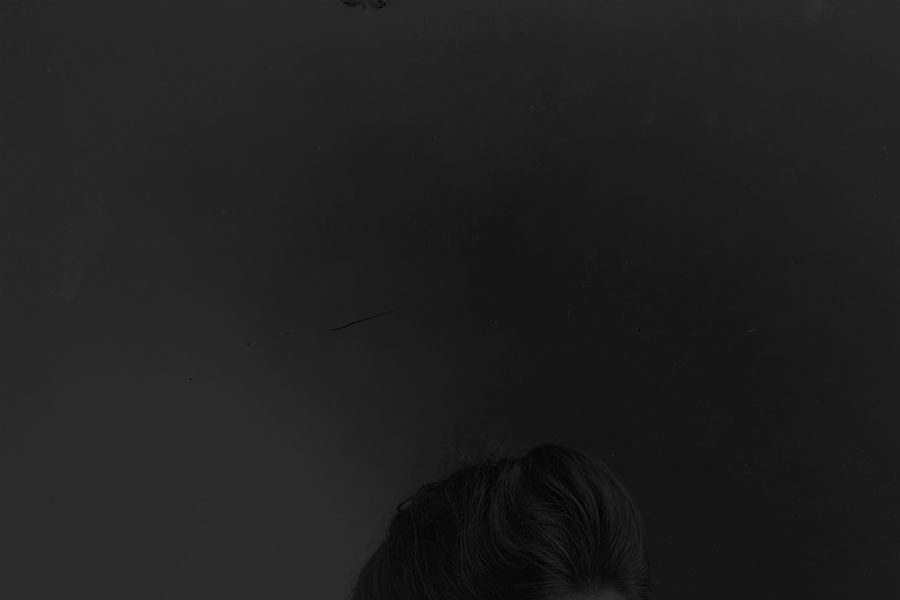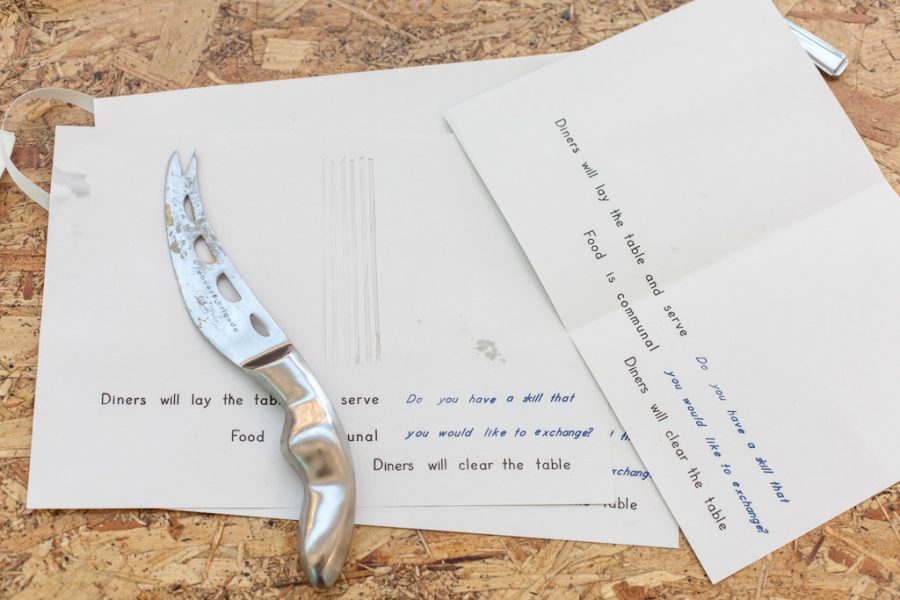How should we talk about the trace? When we talk about traces, are we referencing something which has been left behind— as a fragment of the past? Or is it a rupture in a temporal continuum, something which rises above and beyond everyday experience, residing in its own spatial framework? Traces can inhabit these ambiguous spaces, gesturing towards something which we notice passing before us unannounced; the inexpressible is contained in what is least expressible here as a faint reminder of what is lost.
In Ryan Moule, Vessels and Vestiges, the possibility of photography considers the viewer’s present encounter with the image, and what is constituted through the process of its creation. We are perplexed as we stand in front of these photographs. Is there something we can conceive tangibly beyond the image? In Moule’s work, blackness renders as a thick, tar like quality; neither sublime nor enticing. This blackness appears much like a potent memory or visual relationship that we may have to the past. Vessels and Vestiges are much like an undisturbed memory, where the medium of photography, which permits for a cemented moment, is prompted by virtue of the image. For this reason they are entities of their own; displaying a unique visceral materiality which opens a landscape of discernment— a perceptual horizon which bears no limits.
It would be careless not to ask the simple, but pressing question, when considering such temporal spaces: does photography capture a temporal moment? What is lost during the process of creating these images? Perhaps this is a space which is purposefully left to be speculative to the onlooker? There is a double-bind inherent to these images. On the one hand, they seem to construct what they predispose— commenting on the very medium they embody, but also attempting to render as something different. Something other.
In On Photography Susan Sontag writes, ‘a photograph is both a pseudo-presence and a token of absence’. She is partly referencing the ambiguity that photographs present in their form. But in relation to Moule’s work, the capturing of a moment allows for a crystallisation of a specific past encounter whilst simultaneously defining what exists outside its parameters. His photographs present the space we cannot quite visually locate and, in so doing, we are invited to meditate upon the complexity of these photographs.
It is under the guise of these photographs that the viewer is perceptually re-orientated. As this unfolds, surely what is lost in the process of the image-making process also presents what is found. This is to say, that in order to create an echo of a past event through the photographic image it must be taken as something which bears evidence. Despite the abstractness of Moule’s work – its dark, visceral aesthetic and meditation on darkness – his artistic process allows room for the viewer to place their own meaning onto the photographs. This openness is subtle in the work, as it changes our temporal experiences to the image making, and how we rupture temporal experiences.
I have always had the sense that such images display themselves as a container. Think of Ad Reinhardt’s Abstract Paintings (1962), for example, where colour is seen as one entity: a viscous substance which yearns beyond its materiality. In Reinhardt and Moule’s works the treatment of a substance seems to have no differentiating qualities. But here it seems to invade order, perhaps due to its meditation on temporality— Moule’s work mimics the action of temporality— passing through the stagnant qualities of many fixed images observantly, pensively residing as an object of address to the onlooker. A comment on what is hardly felt or seen, but which holds a presence in the room— much like dusk in an uninhabited landscape, or a horizon before twilight.
But what does darkness permit? Is it always a sense of living without measure? It certainly seems to convey a feeling of uncertainty. The aesthetics of these photographs draw upon fragility and simplicity, as something which can be ruptured; dark black tar tones which, upon first viewing, seem to be a singular block of colour. However, on closer inspection, they are not complicit in this aesthetic – they are complex and hard to untangle visually. They resonate with the themes in Moule’s work, in that we can see these lingering temporal moments but are unable to grasp them in the present moment. This is not to say that a glimpse at something beyond what is before us holds a greater weight. It simply ignites the possibility that our present encounter is by no means absolute; it is transformative. It is this dualistic understanding (of what is left behind) in photographs which escapes capture in photography; it allows us as viewers to long for something other than what is presented. In these images, where we cannot quite grasp the symbolism of an image, every trace holds meaning, whether it be a simple line, a darkened patch, or a scratched surface.
When we think of failure we consider it an end point; a rupture which cannot be changed or transformed. But what about starting from failure? These photographs demonstrate that fragmentary experiences always persist after the moment they happen. This stitching together of experience becomes apparent when these photographs render as objects of address, destabilising the expectation we so readily impose upon them. A capturing takes place, which becomes a crystallised moment, which beckons the onlookers disturbance. It is visually disconcerting; not solely in its ability to destabilize the inherent process of the photograph, but also to reimagine its perceptual horizon on behalf of the viewer. Moule’s work regains control of our attention, it suspends it outwardly into a realm which reveals the intimacy of the image, and its hidden aesthetic qualities.
Moule’s work is therefore inherently philosophical in its visual treatment of uncertainty— it seems to suggest that as observers we need to reimagine and encourage others to embark upon a different perceptual world: a composition which is mysterious and otherworldly. But as long as such images embark upon a journey into the unknown – that is a space which is indescribable, but yet present— we are all subject, as viewers, to feel at odds with the aesthetic image. Perhaps only through complex constellations of shared experiences can we come to know what is inaccessible visually and viscerally? The closedness of such darkness acts as a catalyst to allow openness to flow in, even if its affects are visually disconcerting. Perhaps then what is absent in these photographs is their most alluring quality— residing somewhere between the recogniseable and uncanny, as optic entities of address.



